 |
Site created 12/15/97.

page created: 7/5/06
 Barrie Maxwell - Main Page |
| Classic
Reviews Round-Up #29 and New Announcements Welcome to the latest edition of Classic Coming Attractions. I'll got the usual mix of reviews and new release news for you. This time I've covered some 16 releases (comprising 28 titles) from Fox (House of Strangers, I Wake Up Screaming, Charlie Chan Collection: Volume 1, Betty Grable Collection: Volume 1, Butch Cassidy and the Sundance Kid, Valley of the Dolls), Paramount (Andy Griffith Show: Season Six, Plunder of the Sun, Track of the Cat), Sony (Buster Keaton Collection: The Great Stone Face, Why We Fight), Universal (Cecil B. DeMille Collection, John Wayne: An American Icon, Leave It to Beaver: Season Two), VCI (Western Divas Double Feature), and Warner Bros. (The Searchers: Special Edition). Looking over the reviews, I seem to have recommended nearly everything but I have no second thoughts. The list of new announcements mainly relates to September and October news, but there's not a huge amount. Warner Bros. leads the way as usual. The classic new release database has been updated accordingly. Reviews of New and Current Releases I lead off this time out with a brief consideration of Universal's box set, The Cecil B. DeMille Collection. By virtue of its control of the pre-1949 Paramount catalog, Universal has the rights to virtually all of DeMille's sound output. In this current release, it has packaged together The Sign of the Cross, Four Frightened People, Cleopatra, The Crusades, and Union Pacific, all from the 1930s. Rather than its usual practice of placing multiple titles on double-sided discs, Universal here gives each film its own disc (although the digipak format involves overlapping two of the disks which reduces easy access). Four Frightened People is a more intimate film than the usual DeMille extravaganza, but otherwise the other four demonstrate the typical DeMille showmanship. Claudette Colbert is prominent in the first three, in more ways than just billing given the Pre-Code nature of the films. In The Sign of the Cross, she plays Nero's wife in a tale of the Roman persecution of Christians. Fredric March and Elissa Landi have respectively the lead roles as the Roman Prefect charged with leading Nero's campaign against the Christians and the Christian woman with whom he falls in love. But it's Colbert bathing in her immense bathtub filled with asses' milk and the scenes of Nero played by Charles Laughton that one remembers. In Four Frightened People, Colbert is one of four disparate people (a British official's wife, a rubber chemist, a Chicago teacher, a newspaper reporter) who find themselves stranded in the jungle after their steamer experiences an outbreak of bubonic plague. The film is an uneasy blend of drama and comedy that never really engages the audience. Colbert manages her usual DeMille bathing scene. Cleopatra is an excellent film depicting the Cleopatra/Julius Caesar (Warren William)/Marc Antony (Henry Wilcoxon) triangle with intelligence, excitement, and spectacle. All three leads provide good portrayals and DeMille fills out his large cast with his usual blend of well-known character actors (Joseph Schildkraut, Ian Keith, and C. Aubrey Smith among them in this case). DeMille's version of The Crusades does, I guess, contain iotas of the truth but it's really just an excuse for the usual DeMille extravaganza -this one his most expansive to date. Loretta Young takes on the leading female role as Berengaria (betrothed to King Richard the Lion-Hearted but held hostage by Saladin who controls Jerusalem), but this time there's narry a bathtub in sight. Henry Wilcoxon and Ian Keith co-star as Richard and Saladin respectively. Union Pacific is one of the better of the major A westerns that characterized late-1930s fare. It's the story of the building-of and meeting between the Union Pacific from the east and the Southern Pacific from the west. Joel McCrea stars as the overseer for the Union Pacific aided by sidekicks Akim Tamiroff and Lynne Overman. Arrayed against him are the likes of Robert Preston playing a former friend of McCrea's, crooked gambler Brian Donlevy, and henchman Anthony Quinn. Barbara Stanwyck is actually top-billed playing a post-mistress in love with McCrea. Unfortunately she's been saddled with a broad Irish accent in the film that reduces her effectiveness. The film is packed with action including an impressive train wreck. All five films look quite nice on DVD with sharp image transfers (except Four Frightened People which looks a little soft). There are modest amounts of grain evident on each film. The mono sound on each title is quite acceptable, but there are no supplements - a distinct disappointment. The set is not as big a bargain as other Universal multi-title sets but is still an easy recommendation. DeMille enthusiasts should note that Universal still has This Day and Age (1933), The Buccaneer (1938), North West Mounted Police (1940), The Story of Dr. Wassell (1944), and Unconquered (1947) unreleased on DVD. They would make for a great second Cecil B. DeMille collection! The delay in the release of Boomerang as part of the most recent wave of Fox Film Noir is somewhat assuaged by the quality of the two titles we did get. House of Strangers is an excellent drama that offers fine roles for each of Edward G. Robinson, Richard Conte and Susan Hayward. In it, Robinson is an overbearing family patriarch who also presides over his own bank. He has one favoured son - a lawyer (Conte), and three other sons whom he keeps on a short leash with promises of inheriting money and position through the family business. Robinson's banking practices run him afoul of the law, eventually forcing Conte to make a decision with far-reaching consequences. Fox thought so much of the story that it remade it successfully as Broken Lance with Spencer Tracy barely five years later. The film's confining settings, both physical and moral, lend it much of its claustrophobic noir sensibility, and Conte manages to convey a convincing ambiguity to his character that contributes further. Look for effective work by Luther Adler as the eldest brother and an early film appearance by Efrem Zimbalist Jr. as one of the others. I Wake Up Screaming is an early example of the film noir style with its low-key lighting and effective use of shadow. Otherwise it's a fairly standard crime drama buoyed by a typically effective Hollywood cast for the time. Victor Mature plays a promoter accused of the murder of a young actress. He first hides out with the dead woman's sister (Betty Grable with whom he's in love, but is captured. When he realizes that the police are not making much of an effort to look for the real murderer, he eventually manages to escape in order to try to clear his name. As mentioned, the real strength of the film is its marvelous cast. Aside from the principals, Laird Cregar appears as a corrupt detective while familiar faces such as Elisha Cook Jr., Alan Mowbray, William Gargan, Allyn Joslyn, Morris Ankrum, Clarles Lane, and Chick Chandler abound. Reliable studio director Bruce Humberstone keeps the whole thing humming along over a brisk 82 minutes. Both discs, sporting the usual fine Fox transfers on the noir titles and providing audio commentaries (the one on I Wake Up Screaming is by Eddie Muller), various poster and still galleries, and theatrical trailers, are recommended. 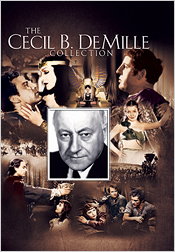   While I'm talking about Fox product, the studio has added some more nice titles to its Cinema Classics Collection - namely Charlie Chan: Volume 1 and the Betty Grable Collection: Volume 1. The former is a four-disc set that includes four Chan features made in 1934-1935 - the first four starring Warner Oland as Chan that are still extant (Charlie Chan in London, Charlie Chan in Paris, Charlie Chan in Egypt, Charlie Chan in Shanghai). Four earlier Chan features with Oland have been lost including the first one - Charlie Chan Carries On. It should be noted, however, that a Spanish language version of the latter does exist. It has an entirely different cast and is known as Eran Trece ("There Were Thirteen") and is included in the box set as a supplement. The four main films form a sort of around-the-world tour for Charlie Chan. The first finds Charlie in London (actually he spends most of his time at a country estate) where he attempts to solve a murder that will free an innocent man on death row with just three days to live. Ray Milland has an early supporting role and Alan Mowbray is prominent amongst the suspects. Moving on to Paris, Charlie is faced with a series of murders all seemingly linked to a mysterious scruffy war veteran on crutches. Erik Rhodes has a prominent supporting role while Keye Luke makes his first appearance as Chan's eldest son "Lee". He appeared in most of the Oland Chan films thereafter. Charlie then finds himself in Egypt where he's been hired by the French Archeological Society to find one of their members who has gone missing. Rita Cansino (later Rita Hayworth) has an early supporting role and the film also features Stepin Fetchit performing some of his virtually unintellible schtick. Finally, Charlie visits Shanghai in the country of his "honourable ancestors" and finds himself embroiled in solving a murder carried out at a banquet in his honour. Opium smuggling proves to be at the root of the murder. Keye Luke returns for his second appearance as Number One Son. All four of the films clock in at a brisk 70-80 minutes and offer high entertainment value. The mysteries are nicely conceived and the actual villains well concealed. Warner Oland is very good as Chan. For my money, Charlie Chan in Paris (well plotted) and Charlie Chan in Shanghai (more physical activity than usual) were slightly more appealing than the other two. Fox has done a fine job with the transfers, reflecting their investment in restoring the films several years ago. There is modest grain in evidence for the most part, but the images are clear and fairly crisp with good black levels and a decent of image detail. London and Paris are the best-looking overall while Egypt is perhaps the least of the bunch. The mono sound is quite decent, particularly on Paris, which has essentially no hiss in evidence at all. The supplements are impressive, ranging from the aforementioned Eran Trece which is very diverting (and has good English subtitles) to three new featurettes providing historical and social context for the Chan films. Highly recommended. To be honest, I've never been hugely impressed by Betty Grable. She was certainly a favourite wartime pin-up girl for the forces, but for me she never exuded the same charisma in her films or demonstrated the same talent as the other top musical performers of the era. But that doesn't mean I can't enjoy her films, particularly when they're well populated with other stars and familiar supporting players. In Fox's Betty Grable Collection: Volume One, we get four of her films - The Dolly Sisters, Down Argentine Way, Moon Over Miami, and My Blue Heaven. At time of writing, I only had the first two of these at hand for review. Both are pleasant entertainment, but Down Argentine Way is much the best of the two for my money. The story is the usual fluff, with Grable falling in love with co-star Don Ameche who owns a horse that she'd like to buy. Ameche would be glad to oblige, but his father refuses to sell because the two families have been feuding for years. The film was shot in dazzling Technicolor and benefits from its exotic (though studio-bound) Argentinian setting, allowing Carmen Miranda to make the most of her North American film debut. The Nicholas Brothers deliver one of their incredible dance numbers, and fine support is provided by the likes of Charlotte Greenwood, J. Carrol Naish, Leonid Kinskey, and Henry Stephenson. Reportedly Grable and Kinskey appeared in the film as replacements for the originally-cast Alice Faye and Cesar Romero respectively. The Dolly Sisters is very loosely based on the life of the real-life pair of entertainers Yansci and Roszika Deutch who emigrated from Hungary to America in 1900 at 8 years of age. The sisters began their career in vaudeville in 1907 and later appeared in shows produced by Florenz Ziegfeld and Oscar Hammerstein. They performed extensively both in North America as well as in Europe. The film does portray these general aspects of their career, but beyond that the story is pure fiction. The sisters were twins, which the film does not reflect, although it does attempt to make stars Betty Grable and June Haver look like twins through grooming and costuming. As is typical for a musical portraying the early part of the century, extensive use is made of traditional songs from the era, but the film does introduce "I Can't Begin to Tell You" (Academy Award nomination for James Monaco and Mack Gordon) as well as make good use of "I'm Always Chasing Rainbows". Grable was once again a replacement for Alice Faye who declined the role, while Grable's love interest was played by John Payne in his first film following wartime service. The film's major production numbers are well-mounted, and the film is generally enjoyable but never really takes off because of the material's familiarity and the lack of pizzazz from the main players. S.Z. Sakall fans though will be happy to see a nice supporting performance from him (who else to play a Hungarian father in a Hollywood musical), not to mention his character's ongoing card game antics with Sig Ruman. Both Down Argentine Way and The Dolly Sisters are three-strip Technicolor productions and Fox has done a very nice job transferring them to DVD. Argentine is somewhat better-looking than Dolly with beautifully rendered colour, very good image detail, and minimal speckling. Registration issues are also minimal. Dolly's colour is also exceptional, but debris and registration issues are slightly more evident. The mono sound on both is more than adequate. Each DVD sports an information-packed audio commentary (film historians Drew Casper on Dolly, Sylvia Stoddard on Argentine), photo galleries, lobby card reproductions (B&W), and trailers. A Betty Grable biography as seen on the A&E network is also included on the Argentine disc. Down Argentine Way is recommended. Despite its classic shortcomings, Sony still does surprise from time to time. A fine recent example is its two-disc Buster Keaton: The Great Stone Face, which contains all ten comedy shorts that Keaton did at Columbia during the period 1939-1941. As had become typical of Keaton's sound films, first at MGM and then at Columbia, his creative input was minimal and he worked with studio-created scripts and studio-imposed production units. In most cases the results were disappointing compared to Keaton's silent work, although some of the sequences are obviously inspired by gags from Keaton's past efforts (material in the shorts So You Won't Squawk and Mooching Through Georgia are good examples). Part of the problem was the mismatch between Keaton's more cerebral approach to comedy and the slapstick preferences of producer Jules White who was much more in tune with The Three Stooges. The ten shorts were each filmed quite quickly (in as little as three days) and featured such recurring faces as Dorothy Appleby and Elsie Ames, each vaudeville comediennes of distinctively different temperament (Appleby was more in sync with Keaton while Ames' knockabout style seemed better suited to the Stooges). In general, there are few real gags suggesting great originality in any of these Columbia shorts, but a few of them are entertaining nonetheless. I found that Nothing But Pleasure, She's Oil Mine, and Pest from the West offered the most entertainment. All the shorts look and sound more than adequate on disc, but Sony has actually outdone itself on the supplements. Each short has its own audio commentary by various Keaton experts (all are quite informative without too much repetition); there's a very decent 25-minute documentary focusing mainly on Keaton's silent work and his Columbia period; and finally we get a paperback reproduction of the script of She's Oil Mine, apparently as originally annotated by Keaton. Recommended. 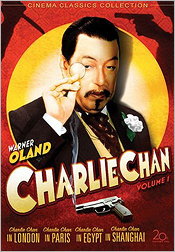 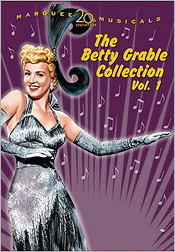  I suspect John Wayne is the actor best represented on DVD. Now adding to the availability of his films is Universal's John Wayne: An American Icon, which contains five titles - Seven Sinners, Shepherd of the Hills, Pittsburgh, The Conqueror, and Jet Pilot. Unfortunately for Universal, it doesn't have access to most of Wayne's best films and having already released The Spoilers and Reap the Wild Wind, this collection is decidedly variable in film quality. Universal would do Wayne fans a real favour by making the five programmers he made at the studio in 1936-37 available. They're not great films, but would sure fill in a blank for many. In any event, returning to the collection at hand, Shepherd of the Hills (1941) is the most welcome of the bunch. Originally produced at Paramount and directed by Henry Hathaway, the film offers Wayne a great opportunity as a leading man in a major production - one that he seizes effectively with an emotionally effective performance as a young moonshiner who carries a hatred for his father who apparently deserted the family causing his mother's early death. The film trades on Wayne's Stagecoach success by dressing him with a similar look, but otherwise there is definite progression evident in Wayne's acting style. Fine support is provided by Harry Carey (his son would become a fixture in later Wayne films), Betty Field and Beulah Bondi. Director Hathaway uses colour well (the film was Wayne's first Technicolor outing) and also mixes in location shooting to advantage. Seven Sinners (1940) and Pittsburgh (1942) are both Marlene Dietrich vehicles (produced at Universal) in which Wayne has major co-starring responsibilities. In the former, he's a navy lieutenant enamored of Dietrich's South Seas torch singer while in the latter he teams with Dietrich and Randolph Scott as determined mining entrepreneurs. The films are typically glossy Hollywood studio productions of the period offering value for money in terms of entertainment for the moment with little lingering impact. The most memorable aspect of both films are the fistfights that Wayne engages in, particularly the one in Pittsburgh wherein he reprises the fight with Scott that they had had in The Spoilers. As for the other two films in this collection, The Conqueror and Jet Pilot both have interest, but suffer in different ways . The Conqueror (1956) has Wayne ludicrously playing Genghis Khan with taped eyes and his distinctively American intonations. It would all be so laughable were it not for the real-life misfortune that the film is associated with - filmed on location in southwestern Utah within range of an nuclear test sight, many the film's cast and crew later died from cancer (including Wayne, Susan Hayward, Pedro Armendariz, Agnes Moorehead, and director Dick Powell). Jet Pilot (1957, shot in 1949 by Josef von Sternberg at Howard Hughes' RKO but tinkered with by Hughes over the next eight years) is a Cold War story that has Wayne playing an American air force colonel who becomes involved with a Russian pilot eager to defect played by Janet Leigh. The film is a clichéd mess that turns out to be an inadvertent comedy, although the aerial photography stills impresses. Universal presents the five films on two discs (one of them double-sided). All the image transfers are very good revealing great colour fidelity on Shepherd of the Hills, Jet Pilot, and The Conqueror and lustrous black and white with a nice level of grain on Seven Sinners and Pittsburgh. Source material defects are minimal. The work on Shepherd of the Hills is particularly impressive. The Conqueror is correctly framed at 2.35:1 reflecting its early CinemaScope use while Jet Pilot is framed at 1.85:1 (reflecting the way it was projected in 1957 even though it was presumably shot in the old Academy standard of 1.37:1 in 1949). Both are anamorphic transfers. The sound, two-channel mono on all, is in good shape and the only supplements are a few trailers. The package is another bargain from Universal and is recommended. Another Wayne film, this one previously available on DVD, is The Searchers and after having been expected for almost two years, Warner Bros. has finally released its new two-disc Special Edition. The film of course is the classic John Ford western and the one that is often pointed to as the best of Ford's output. A magnificently structured and fully realized depiction of the competing forces of civilization and the wilderness - a theme at the core of many western dramas, The Searchers rewards repeated viewings on many levels. The acting performance by John Wayne is a polished and thoughtful one, outweighing the classic poses and mannerisms so often associated with him. The story itself is a complex one with a native American theme that grows ever more resonant as time passes. All the well-known Ford touches - the use of Monument Valley, the importance of community, the role of music, the juxtaposition of brief but furious bursts of action contrasted with the peace of normal everyday living - seem heightened by the film's melancholy air so poetically captured by the framing mechanism of the opening and closing cabin door that begins and ends the film. Warners has delivered a superb DVD presentation, one that blows the original DVD release out of the water. The VistaVision Technicolor production looks like a newly minted film with its sharp, bright, colourful, and finely detailed image and the complete absence of source defects. The mono sound is also in great shape. Supplements include Peter Bogdanovich's usual fine audio commentary and three documentaries (a new one that's an appreciation of the film by contemporary filmmakers, a 1998 making-of documentary, and a set of vintage featurettes made in 1956 that were also available on the previous DVD release). Very highly recommended. Interested purchasers should note that the film is available in three ways - in the two-disc SE reviewed here; in an Ultimate Collector's Edition that includes the SE plus a set of reproductions of such things as a 1956 comic book, the original press book, and filmmakers' memos, correspondence, and stills; and finally as part of the John Wayne/John Ford Collection which boxes The Searchers: Ultimate Collector's Edition together with seven other films - Stagecoach, The Long Voyage Home, Fort Apache, She Wore a Yellow Ribbon, They Were Expendable, Three Godfathers, and The Wings of Eagles. Canadians should note, however, that Stagecoach is not included in the set available in Canada as Warners does not have the marketing rights to the title there. We don't just have films that Wayne starred in this time out, but also at hand are several in which he was only involved via the production side through his company, Batjac. Paramount has been gradually issuing these titles on DVD through an agreement with the estate of son Michael Wayne, even though they were originally distributed theatrically by Warner Bros. Track of the Cat (1954) was apparently a film that director William Wellman got the go-ahead to make because of his success with Batjac's The High and the Mighty. The film is nominally a western by virtue of setting and general storyline, but it is essentially a character study of family members completely at odds with each other. The Bridges family operates a ranch in the high country and its cattle are threatened by a mountain lion. Ma Bridges (Beulah Bondi) rules the family which consists of her alcoholic husband (Philip Tonge), three sons (Robert Mitchum, William Hopper, Tab Hunter), and a bitter unmarried daughter (Teresa Wright). The three sons are distinctly different with Mitchum portraying the strong domineering one, Hunter the weak youngest one, and Hopper the oldest but also the mediating force. The latest appearance of the mountain lion draws the two oldest brothers away and allows all the family members' worst characteristics to be exposed. The film works best when one realizes that the cat is merely a device and not the object of the story as the title might suggest. Very downbeat but rewarding, Track of the Cat features some marvelous performances from Mitchum and Bondi with nods to Hunter and Hopper also. It benefits immensely from William Clothier's cinematography which emphasizes the emotional bleakness by wringing much of the primary colours out, giving the film an almost black and white feel. The film only stumbles at the end when it finishes hurriedly and in a somewhat formulaic fashion. Paramount's 2.55:1 anamorphic presentation captures Clothier's cinematography very well although there are quite noticeable edge effects and appreciable debris. The four-channel sound is fairly dynamic. Supplements include a chatty audio commentary by William Wellman Jr., Tab Hunter, and Wellman biographer Frank Thompson; a four-part documentary that has some interest though seems light on actual production information; a photo gallery and various trailers. Recommended.   Plunder of the Sun is the other Batjac production I've had a chance to look at. It stars Glenn Ford as a man asked to transport a mysterious package via freighter from Havana to Mexico. Its contents turn out to be the key to the whereabouts of a lost Zapotecan treasure and plunge Ford into danger when he runs afoul of two woman (Diana Lynn, Patricia Medina) and a man (Sean McGlory) also after the same thing. Much of the action takes place amid the ruins of Mitla and Monte Alban near Oaxaca. Mexico. The latter is the film's chief attribute along with its general shadowy atmosphere, for its storyline seems muddled and never compelling. Ford is fine as the American insurance adjuster, but his adversaries are a bland lot. Diana Lynn tries for a Gloria Grahame impersonation, but only succeeds in looking sullen rather than seductive. The story is told in a flashback form with some voice-over narrative and almost seems to be trying to create a film noir sensibility but it fails to come off. Paramount's full screen presentation is correctly framed and its black and white image is impressively sharp with nice image detail. The mono sound is in good shape. Supplements include a very good audio commentary with Peter Ford (Glenn Ford's son) and historian Frank Thompson, a decent six-part documentary, a featurette on Sean McGlory, and various trailers. I'd try a rental on this one at best. Before spring is but a memory, I should make mention of a few of the many other western releases that have tended to get concentrated in that season of the year. Butch Cassidy and the Sundance Kid (1969) has been revisited by Fox in a new two-disc Ultimate Collector's Edition. The film was the first of two (the other was The Sting) to capitalize on the remarkable chemistry between Paul Newman and Robert Redford, and is a refreshing amalgam of western action, humour, and tradition-breaking (our heroes actually leave the country when faced with adversity). I'm still not convinced of the appropriateness of the "Raindrops Keep Falling on My Head" interlude, but I know many others differ. For those who already own the original DVD release, this new version is a worthy upgrade. The 2.35:1 anamorphic transfer is modestly improved in clarity and sharpness, although the nature of Conrad Hall's cinematography and the notable colour instability of film stocks of the time mean that the film is just not going to look as flashy as some other colour efforts. There a whole raft of extras that includes those on the original release (notably the audio commentaries and a making-of documentary), supplemented by a fine new making-of featurette (35 minutes) that contains extensive interview footage of Newman, Redford, and Katharine Ross as well as the History Through the Lens: Butch Cassidy and the Sundance Kid Out of Time documentary (90 minutes) and a deleted scene sans audio. Highly recommended. VCI's Western Divas Double Feature, issued under its ACME DVD Works label, pairs The Groom Wore Spurs with Oklahoma Annie. Both are 1951 productions, the former from Universal and starring Ginger Rogers (perhaps a diva, but certainly not western), the latter from Republic and starring Judy Canova (certainly western but no diva). As films, neither is anything to write home about, but on balance Oklahoma Annie, despite its B-series western nature, is slightly more spirited provided you can put up with the acquired taste of Judy Canova. It also offers the benefit of plenty of familiar supporting talent on display, such as Roy Barcroft, Grant Withers, Frank Ferguson, Allen Jenkins, and Denver Pyle. The Groom Wore Spurs is a plodding effort as Rogers plays a lawyer who marries a movie cowboy hero so obnoxiously played by Jack Carson as to put one off the film despite any other merits it may have. The transfers for both films are workable. The Groom Wore Spurs looks soft and is well-speckled and scratched, but is clear enough. Oklahoma Annie is in Republic's Trucolor and although somewhat faded (the process never offered the fidelity of Technicolor), looks presentable. The disc contains Castle Films News on Parade 1951 as an extra. 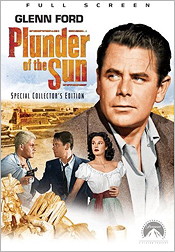 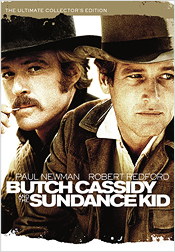 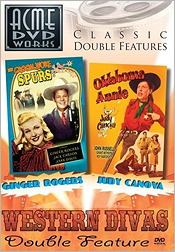 |
On to Part Two
Barrie Maxwell - Main Page
 |
| Site
designed for 1024 x 768 resolution, using 16M colors and .gif 89a
animation. © 1997-2015 The Digital Bits, Inc., All Rights Reserved. billhunt@thedigitalbits.com |